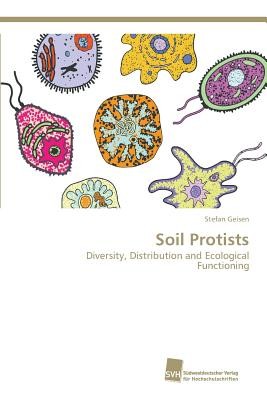
- We will send in 10–14 business days.
- Author: Geisen Stefan
- Publisher: Sudwestdeutscher Verlag Fur Hochschulschriften AG
- Year: 2015
- Pages: 328
- ISBN-10: 3838151577
- ISBN-13: 9783838151571
- Format: 15.2 x 22.9 x 1.9 cm, minkšti viršeliai
- Language: English
- SAVE -10% with code: EXTRA
Reviews
Description
Protists are by far the most diverse and abundant eukaryotes in soils. Nevertheless, very little is known about individual representatives, the diversity and community composition and ecological functioning of these important organisms. For instance, soil protists are commonly lumped into a single functional unit, i.e. bacterivores. This work tackles missing knowledge gaps on soil protists and common misconceptions using multi-methodological approaches including cultivation, microcosm experiments and environmental sequencing. In a first part, several new species and genera of amoeboid protists are described showing their immense unknown diversity. In the second part, the enormous complexity of soil protists communities is highlighted using cultivation- and sequence-based approaches. In the third part, the present of diverse mycophagous and nematophagous protists are shown in functional studies on cultivated taxa and their environmental importance supported by sequence-based approaches. This work is just a start for a promising future of soil Protistology that is likely to find other important roles of these diverse organisms.
EXTRA 10 % discount with code: EXTRA
The promotion ends in 22d.12:02:27
The discount code is valid when purchasing from 10 €. Discounts do not stack.
- Author: Geisen Stefan
- Publisher: Sudwestdeutscher Verlag Fur Hochschulschriften AG
- Year: 2015
- Pages: 328
- ISBN-10: 3838151577
- ISBN-13: 9783838151571
- Format: 15.2 x 22.9 x 1.9 cm, minkšti viršeliai
- Language: English English
Protists are by far the most diverse and abundant eukaryotes in soils. Nevertheless, very little is known about individual representatives, the diversity and community composition and ecological functioning of these important organisms. For instance, soil protists are commonly lumped into a single functional unit, i.e. bacterivores. This work tackles missing knowledge gaps on soil protists and common misconceptions using multi-methodological approaches including cultivation, microcosm experiments and environmental sequencing. In a first part, several new species and genera of amoeboid protists are described showing their immense unknown diversity. In the second part, the enormous complexity of soil protists communities is highlighted using cultivation- and sequence-based approaches. In the third part, the present of diverse mycophagous and nematophagous protists are shown in functional studies on cultivated taxa and their environmental importance supported by sequence-based approaches. This work is just a start for a promising future of soil Protistology that is likely to find other important roles of these diverse organisms.


Reviews